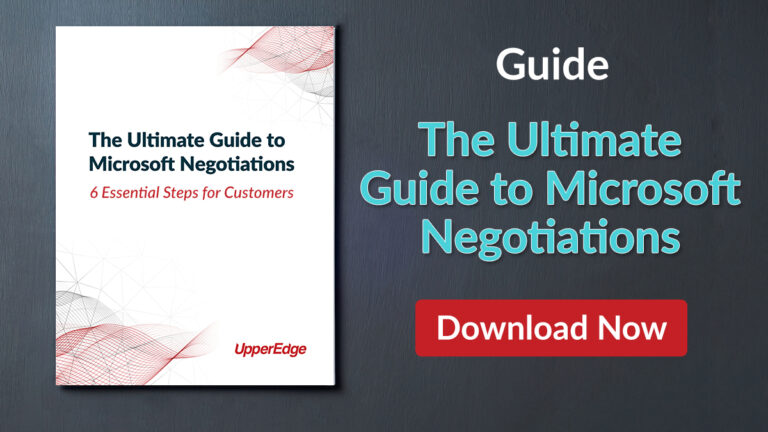- Adam Mansfield
- Reading Time: 4 minutes

Enterprise executives know that employees are most productive when they have the right tools and more importantly, know how to use those tools. When employees come on board having already used the software your organization uses, “downtime” as well as the costs and effort tied to training, is limited. The same can be said when you implement a solution that your employees are already familiar with. The fact of the matter is that enterprise employees are first and foremost consumers, and vendors are very much aware of this. Vendors know that they have a more compelling story to tell the enterprises they target if they can show strong consumer use and adoption.
Consumers Are Using Productivity and Video Conferencing Solutions More Than Ever
The coronavirus pandemic forced millions to abruptly find ways to remotely work, attend school, and socialize with family and friends from a distance. The shift caused a surge in the use of cloud-based productivity tools such as Google Workspace and Office 365 and video chat/conferencing solutions such as Teams, Zoom, Google Meet, and Slack (now part of Salesforce). While many may had used these tools prior to the outbreak, they are now likely using them more than ever before. Those who had never used these products had to learn how to, such as parents who need to set up their children for digital learning.
Whether forced or not, the consumer appetite for these products has significantly grown and vendors are hopping on this opportunity to increase consumer use through free trials and other offers. Consumer adoption of these tools helped drive enterprise adoption, especially for Google Cloud as it has been ramping up efforts to penetrate the enterprise and take market share from incumbent Microsoft. Google had been successful pre-pandemic, but there was certainly more work to be done as they transitioned from being enterprise-ready to a true, trusted enterprise vendor.
Similarly, both Zoom and Slack understood that if they wanted to increase revenue, they needed to find ways to penetrate more enterprises and further increase usage within the enterprises they are already in. Even though the pandemic provided an opportunity for increased use including in enterprises, the struggle they have is two-fold. First, they don’t offer other solutions the enterprise could tie itself to and second, the more established Microsoft and Google have product suites with competitive solutions to Zoom and Slack built in.
Microsoft’s Office 365 includes Teams and Google Workspace comes with Google Meet. It is a hard sell to get these enterprises to add a solution that they already have. That barrier is why it is incredibly important for Zoom and Slack to dominate the consumer space – it makes the sell a bit easier. Slack seemingly decided that the fastest (and likely the best) way to gain access to enterprises to drive adoption was to let Salesforce acquire them, which Salesforce did for roughly $28B. Whether this will work for Slack and Salesforce is a topic for another day.
Google is Gaining Traction
Beyond the consumer use of its Workspace solutions, Google has accelerated enterprise adoption in the past couple of years. Javier Soltero, VP and General Manager, Workspace at Google (who was previously at Microsoft as VP of the Office Product Group) shared that Google Cloud has officially passed 6 million paying Workspace business customers. This is an increase of one million users from the previous year.
These types of announcements show the market that Google Workspace is increasingly being considered a viable option for businesses, including those looking for alternatives to Microsoft Office 365 (whether acquired directly or through the all-in bundle Microsoft 365). Of course, it is much harder to move away from Microsoft 365, given the pain associated with trying to decouple the bundle. Microsoft doesn’t like decoupling very much, especially if you tell them you are moving to Google Workspace.
In an effort to help gain traction with enterprises, Google had also announced that they have rebranded “Hangouts” chat to “Google Meet” which meshes better with the enterprise world. Google even made Google Meet available for everybody that has a Gmail account, instead of just enterprise or educational customers. Google offered unlimited group video calls in Meet for free for Gmail accounts. Of course, now users with free accounts have to work with group calls being capped to one hour (previously 24-hour meeting durations were allowed).
Google Meet, which competes with Microsoft Teams, Zoom, and Cisco Webex, has certainly gained traction coming out of the pandemic, both with enterprises and consumers. Though working at home and the general need to do more “communicating” with others from home (i.e., schooling, family visits) certainly helped all of these vendors’ numbers, they are not the only reason Google is gaining traction. Google Workspace experienced growth in both seats and average revenue per seat (as reported in their Q1 earnings).
Google has been targeting enterprises for a while and they continue to invest in developing their enterprise-focused solutions including Workspace, Analytics, and GCP. They also continue to focus on hiring established executives from other enterprise vendors, like most recently, Adaire Fox-Martin (previously at SAP), to add to earlier high-profile hires like Javier Soltero (previously at Microsoft), Robert Enslin (previously at SAP), and Thomas Kurian (previously at Oracle). To further prove their success to the market, Google will also likely start breaking out their Workspace revenue from recently broken out Google Cloud revenue sometime this year as they continue to announce ramped up utilization and associated revenue from both the GCP and Workspace businesses.
Microsoft Creating Barriers of Entry for Google
Microsoft sees what Google is doing and is working to protect their space by making it harder to move away from Office 365. One way they are doing this is by providing deeper and more enticing discounts for customers who have not yet adopted Office 365 or Microsoft 365 at all or just have not rolled out the solutions to their entire organization. They are putting especially aggressive discounts on the table for the firstline worker community.
Firstline workers are the deskless users that Google has been focusing on as a way to penetrate enterprises. Enterprises need to give these frontline workers access to more tools in order to stay competitive. These frontline workers are also consumers who would benefit from having experience with the solution their employer provides. When you see Microsoft’s reports of growth and the way Microsoft is treating their customers, it is clear that keeping Google out of their enterprise customers’ portfolios is a priority right now.
While Google is making changes to ramp enterprise adoption, Microsoft is making changes to better target the consumer market. They announced Microsoft 365 bundles for consumers with a consumer edition of Teams.
I expect Microsoft’s efforts to target consumers and further land-and-expand enterprise adoption will only ramp up as Google increasingly becomes not only enterprise-ready but a true enterprise solution with Workspace and Google Meet. Microsoft also now has to be concerned about what Zoom and Slack are doing as they gain more leverage with enterprises given ramped consumer use and adoption.
Related Blogs
SaaS Price Increases: What If Vendors Only Charged More When You Got More?
Microsoft Ends EA Volume Discounts: What It Means and How to Respond
Strategic Microsoft Renewal Scenarios: How to Prepare and Stay in Control
About the Author

